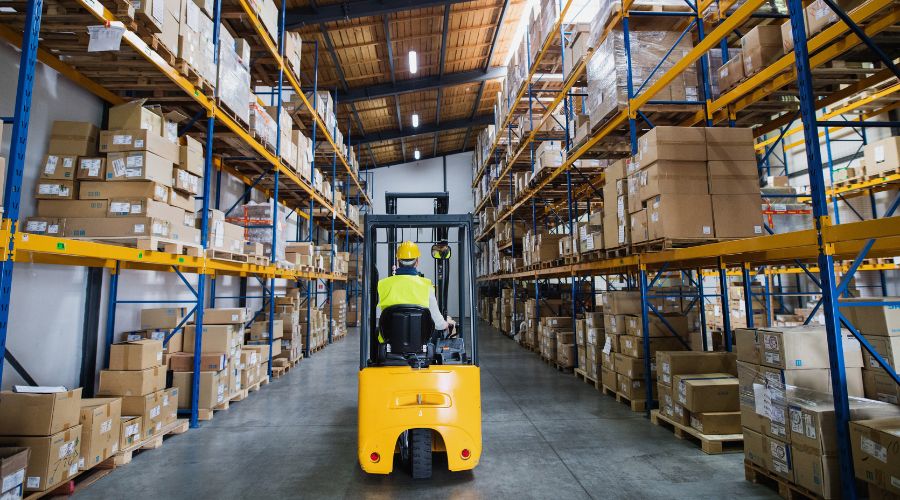There are warehouse operations before the pandemic and after the pandemic. Warehouses have had to adapt to fluctuating market demands and make sure essential items are kept in stock. Whether you are trying to manage inventory levels or lower operating costs, efficiency is the key to making this a reality.
Online shopping and the need for rapid order fulfillment have elevated warehouses into critical supply chain hubs. Today’s warehouses are equipped with sophisticated technology that streamlines processes, reduces errors, and maximizes productivity.
Failing to optimize warehouse operations can lead to higher operational costs, increased error rates, and reduced customer satisfaction. Slow order fulfillment times, inventory inaccuracies, and bottlenecks can negatively impact a business’s bottom line and reputation.

Best Methods for Optimizing Warehouse Operations
Have Clear Picking Routes
An efficient picking route is essential for minimizing warehouse travel time. Warehouses can optimize item picking times and reduce worker strain by utilizing pick path optimization software and mapping efficient routes. Clear picking roots make it easier for employees to get the items they need and move around the warehouse with equipment such as forklifts. Designing your warehouse for this type of movement allows for employees to do their jobs with ease.
- Map out efficient routes whether in software or on the actual warehouse floor
- Implement zone picking where items are defined into different zones
Implement Automation
Modern warehouses are driven by automation. Automated storage and retrieval systems (AS/RS), conveyor systems, and automated guided vehicles (AGVs) can handle repetitive tasks accurately and quickly. The use of these technologies reduces the reliance on manual labor, minimizes errors, and increases productivity. Consider automation tools like:
Use the Right Tools
The right tools and technologies are crucial for optimizing warehouse operations. Warehouse management systems (WMS) provide real-time visibility into inventory levels, order status, and resource utilization. You can also optimize warehouses using services like:
- Warehouse Management Systems (WMS)
- Barcode scanners and RFID technology
- Inventory management software
- Forklifts and other material-handling equipment
- Robots
- Automated storage and retrieval systems (AS/RS)
Different Types of Forklifts
Learn MoreUse Robotics
Robotics play a significant role in modern warehouses by automating various tasks. Collaborative robots assist workers in picking and packing, increasing productivity and reducing the risk of injury. Autonomous mobile robots (AMRs) transport goods within the warehouse, optimizing material flow.
Group Items Together
Organizing items based on their frequency of purchases and how fast they leave shelves helps improve picking efficiency. Grouping frequently picked items together reduces the distance workers need to travel, speeding up the picking process.
Leverage Data and Analytics
Data and analytics provide valuable insights into warehouse operations. Real-time data monitoring allows warehouses to track performance metrics, identify trends, and make informed decisions. Predictive analytics forecast demand, order volume fluctuations, KPIs, and improve performance.
Enhance Training Programs
Regular training and upskilling of warehouse staff are crucial for maintaining high standards of performance. Training programs should cover safety protocols, the use of new technologies, and best practices in warehouse operations. Cross-training employees for different roles increases flexibility and ensures that your warehouse can be staffed even when running on a minimal crew. You don’t have to slow down because a couple of employees are not at the warehouse for that day.
Improve Communication
Implementing communication tools and platforms, such as walkie-talkies and mobile apps, ensures that all team members are on the same page. Regular team meetings and feedback sessions promote collaboration and address any issues promptly. Clear communication channels help prevent misunderstandings and keep all personnel informed.
Focus on Safety
Warehouse operations should prioritize safety. Injuries and accidents can be prevented by following safety protocols, such as using proper lifting techniques and personal protective equipment (PPE). Safety can be a big component on optimizing warehouse operations.
Looking for a Forklift to Optimize Operations?
Need a forklift to help with your warehouse operations? Don’t worry, 360Connect can help! Just fill out our 1–2-minute form and we’ll contact you to verify your information and needs. From there, you can receive up to 5 quotes from qualified suppliers. It’s that easy!

